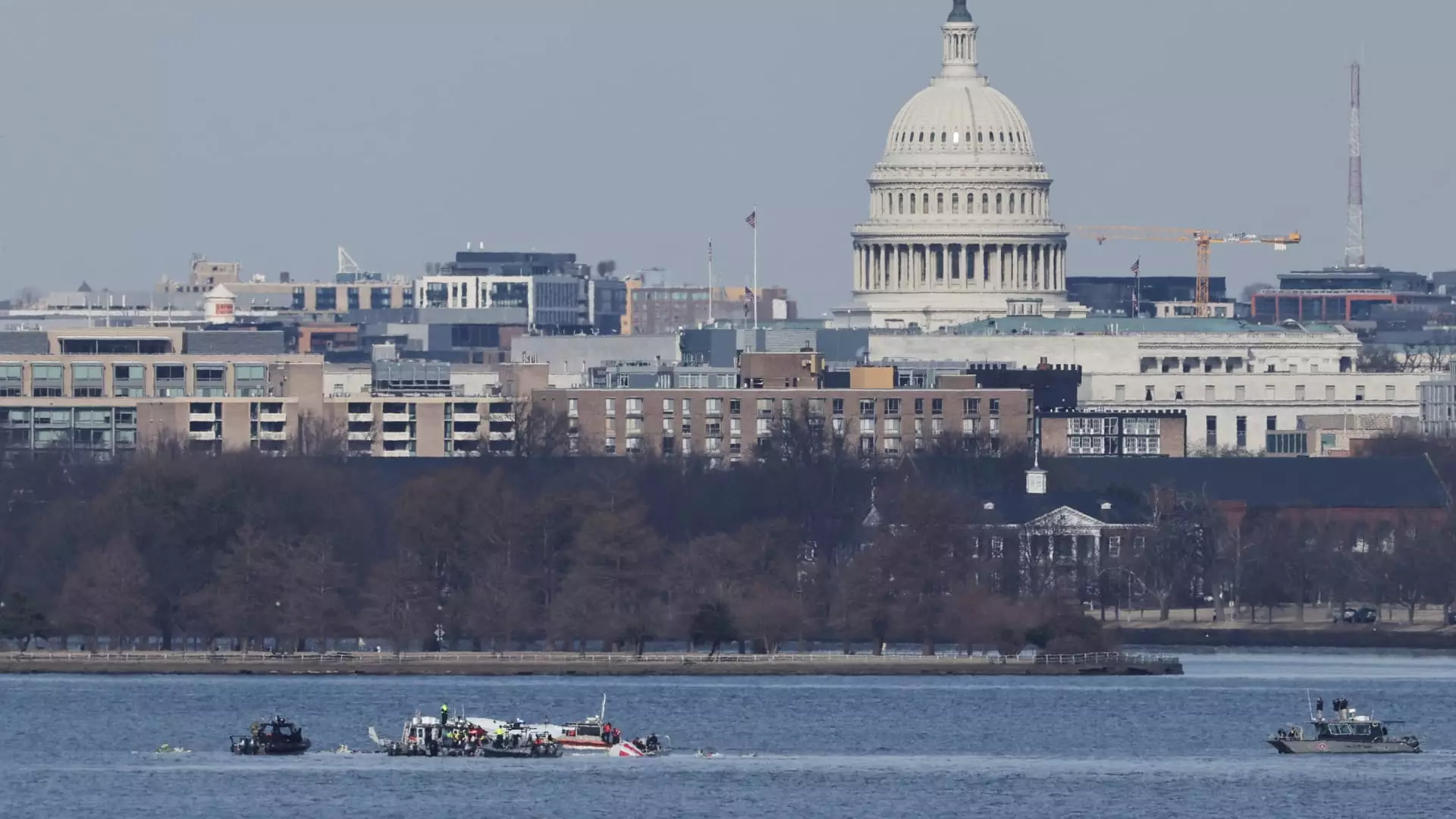In a tragic turn of events, a collision between an Army Black Hawk helicopter and an American Airlines jetliner claimed the lives of 67 individuals over the Potomac River near Washington, D.C., marking one of the darkest chapters in U.S. aviation history since 2001. The magnitude of this disaster, with all 64 souls aboard American Airlines Flight 5342 and the three crew members in the helicopter lost, triggers a wave of scrutiny into the factors contributing to such a catastrophic event. As investigations continue to unfurl, multiple questions arise around aviational protocols, altitude regulations, and whether established safety measures were adhered to.
Initial reports indicate that the PSA Airlines Bombardier CRJ-700 was on its final approach to Reagan National Airport when the mishap occurred. The Federal Aviation Administration (FAA) has stringent guidelines in place for helicopter operations around busy airspaces, particularly in metropolitan areas like Washington, D.C. In a setting where helicopter traffic is common due to military and governmental facilities, airspace management becomes critical. According to existing FAA rules, helicopters flying near the airport must not exceed an altitude of 200 feet. Given that the Black Hawk was reportedly on a proficiency training flight, the question looms: was this altitude adhered to?
A National Transportation Safety Board (NTSB) investigator highlighted the unique complexities of flying within the D.C. airspace, referring to established helicopter zones that dictate specific flight paths. An extraordinary volume of traffic intersects in this airspace, particularly around the vicinity of the nation’s capital, triggering implications for pilot awareness and air traffic control efficiency.
In the wake of this calamity, both the federal agencies and the military have launched sweeping investigations into the events that led up to the collision. Reports indicate that the NTSB is scrutinizing flight data and cockpit voice recorders from the American Airlines jet, with the ultimate goal of piecing together a timeline leading to the crash. The speed at which these pieces of evidence are processed will be pivotal in determining accountability and future preventive measures.
Furthermore, the FAA has enacted immediate flight restrictions on helicopter operations within the D.C. area, only permitting exceptions for critical medical evacuations and law enforcement missions. These regulatory shifts emphasize the pressing need for a thorough reevaluation of aviation protocols, particularly in airspaces known for their congestion and complicated traffic patterns.
In poignant commentary surrounding this tragedy, U.S. officials, including the Secretary of Defense, noted that a “mistake was made,” suggesting a failure to comply with accepted altitude regulations. President Trump’s public remarks on social media further emphasized the perception of negligence, claiming that the helicopter was operating significantly above the established height limit. Such declarations, made in the early stages of an investigation, raise questions about ethical communication practices during sensitive times.
These statements reflect a collective sentiment that points to potential operational misjudgments. It is imperative to dissect whether these conversations about altitude discrepancies are a precursor to broader issues within the aviation sector, such as training protocols, air traffic controller staffing, and fatigue management among personnel.
This catastrophic incident shatters a nearly 15-year period void of fatal commercial air crashes in the United States, a troubling sign amid rising passenger numbers and ongoing challenges with air traffic control shortages. As the industry grapples with this tragedy, regulatory bodies will likely feel increased pressure to address systemic vulnerabilities. Short staffing at crucial air traffic control hubs, like Reagan National, speaks to a larger issue in the national airspace management system.
The fate of the investigation carries weight; not only for the families who have endured unspeakable losses but for the future of aviation safety as a whole. An exhaustive and transparent investigation is paramount to re-establishing trust in aviation operations and implementing the necessary changes to prevent such disasters.
The collision of the Army Black Hawk helicopter and the American Airlines jetliner stands as a stark reminder of the frailty of human endeavors against the backdrop of technological advancements in aviation. As investigations press on, reflection on the failures that led to this tragic event will play a key role in shaping future aviation safety protocols. It is imperative that all stakeholders—government agencies, military officers, and commercial airlines—collaborate closely to ensure that air travel remains safe, secure, and reliable for every passenger. The stakes could not be higher—lives depend on it.


Leave a Reply